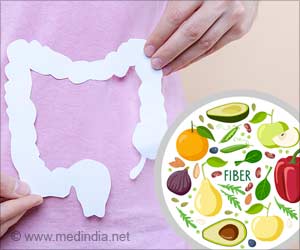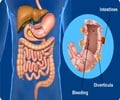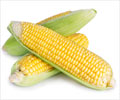Cereal fiber is associated with a lower risk of inflammation and cardiovascular disease.
- Dietary fiber is associated with a lower risk of inflammation and cardiovascular disease
- Cereal fiver is more beneficial than fiber from fruits and vegetables
- So, include cereal fiber in your daily diet to keep inflammation at bay
Until now there had been limited data on the link between fiber and inflammation among older adults, who have higher levels of inflammation compared with younger adults.
The study findings are published in JAMA Network Open.
The research includes data from a large and well-characterized prospective cohort of elderly individuals, with detailed data on dietary intake, inflammation, and incidence of CVD.
The research confirmed previously observed associations between dietary fiber and CVD and extended those investigations to include the source of the fiber, the relationship of fiber with multiple inflammatory markers, and to test whether inflammation mediated the relationship between dietary fiber and CVD.
“Higher intakes of dietary fiber is associated with lower CVD risk. A common hypothesis has been that higher fiber intakes reduce inflammation, subsequently leading to lower CVD risk,” said Rupak Shivakoti, PhD, assistant professor of epidemiology at Columbia Mailman School.
Although there are data to suggest that fiber, in general, might have anti-inflammatory effects by improving gut function, modifying diet and satiety (eg, reduced-fat and total energy intake), and improving lipid and glucose profile metabolism, why cereal fiber but not vegetable or fruit fiber is associated with lower inflammation is not clear and warrants further investigation, noted Shivakoti. Further, he notes that it is not clear whether cereal fiber per se or other nutrients in foods rich in cereal fiber are driving the observed relationships.
“Additionally, we learned that inflammation had only a modest role in mediating the observed inverse association between cereal fiber and CVD,” observed Shivakoti. “This suggests that factors other than inflammation may play a larger role in the cereal fiber–associated reduction in CVD and will need to be tested in future interventions of specific populations."
Co-authors are from Columbia University Mailman School of Public Health; University of Washington; Brigham and Women's Hospital; Harvard Medical School; Boston Veterans Healthcare; Larner College of Medicine at the University of Vermont; San Francisco Veterans Affairs Health Care System; University of California–San Francisco; Kaiser Permanente Washington Health Research Institute; New York Academy of Medicine; Beth Israel Deaconess Medical Center; and Harvard Chan School of Public Health.
The research was supported by the National Heart, Lung, and Blood Institute, the National Institute of Neurological Disorders and Stroke, and the Eunice Kennedy Shriver National Institute of Child Health and Human Development.
Source-Eurekalert
















